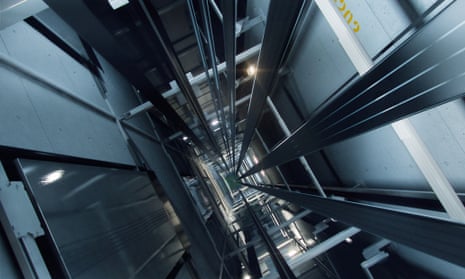Exploring the World of Elevators: Common Problems Encountered by Various Lift Devices
As we browse via the vertical transport systems of contemporary structures, elevators stand out as a crucial component of our everyday lives. From hydraulic lifts to traction systems and machine-room-less layouts, each lift type comes with its set of usual problems.
Hydraulic Lifts
Hydraulic elevators, typically favored for low-rise buildings, make use of fluid pressure to regulate the motion of the elevator car (lift repair companies). This system entails a hydraulic pump pressing oil into a cyndrical tube, triggering the elevator to move in the desired direction. While hydraulic lifts are understood for their smooth and peaceful operation, they do feature their very own set of common concerns
One prevalent issue with hydraulic elevators is oil leakage. Furthermore, issues with the control system, such as malfunctioning valves or a malfunctioning pump, can cause interruptions in the elevator's motion.
Normal upkeep and punctual fixings are important to ensure the smooth performance of hydraulic elevators. By attending to these usual concerns proactively, building proprietors can lessen downtime and make certain the safety and security and effectiveness of their upright transportation system.
Traction Lifts
When thinking about upright transportation systems in structures, another typical type apart from hydraulic elevators is the grip lift. Grip lifts operate utilizing a system of ropes and counterweights that move the elevator auto by clutching onto the hoist ropes. This device enables smoother and much faster vertical transport contrasted to hydraulic systems.
One of the common issues encountered by grip lifts is rope wear. The consistent activity of the ropes within the grip system can bring about deterioration gradually, potentially triggering the elevator to breakdown or become unsafe for use. Regular assessments and upkeep of the ropes are important to make sure the lift's appropriate performance and safety and security.
One more issue that traction lifts may run into is associated with the control system. Issues with the control system can result in issues such as erratic motion, delays in feedback times, and even full shutdowns. Regular screening and maintenance of the control system are essential to avoid such issues and ensure the lift's dependability.
Machine-Room-Less (MRL) Lifts

Among the crucial elements of MRL lifts is the small gearless grip maker that is installed within the hoistway. This maker efficiently drives the elevator automobile without the requirement for cumbersome equipment located in standard grip elevators. Additionally, MRL lifts usually make use of a weight system to balance the auto, further improving their power efficiency.
Despite their advantages, MRL lifts may deal with obstacles related to repair and maintenance due to the confined space for tools setup. Access for servicing elements within the shaft can be limited, needing specialized training for professionals. Appropriate upkeep timetables and normal evaluations are critical to make sure the ongoing smooth operation of MRL elevators.
Overloading and Weight Limitation Issues
Overloading and weight restriction concerns are vital worries in elevator operations. Lift suppliers layout lifts with specific weight capacities to make sure traveler safety and security and equipment longevity.
When lifts are overwhelmed, it puts extreme pressure on the motor, cable televisions, and other components, potentially creating break downs or breakdowns. Safety and security systems such as sensors and overload sensing units remain in area to avoid elevators from moving if they spot excess weight. In addition, going beyond weight limitations can cause boosted energy consumption and damage on the elevator system.
To minimize overloading concerns, developing managers need to prominently show weight limitations in lifts and inform passengers on the significance of adhering to these restrictions - lift repair companies. Normal upkeep checks by certified specialists can additionally help guarantee that lifts are we maintain lifts running within risk-free weight specifications. By attending to overloading and weight restriction issues proactively, structure proprietors can improve lift safety and efficiency
Electric System Failures
Surpassing weight limitations in lifts can not just bring about mechanical issues but additionally possibly add to electrical system failures within the lift framework. Electric system failures are a vital worry in lift procedure, as they can trigger unforeseen shutdowns, malfunctions, or even security threats. One typical electrical problem is the overheating of components because of too much existing flow triggered by straining the lift beyond its ability. This can lead to damage to the wiring, motor, or control systems, resulting in costly repairs and downtime.
Additionally, power rises or fluctuations in the electric supply can additionally interrupt the elevator's procedure, affecting its efficiency and safety. These electrical disruptions we maintain lifts can harm sensitive lift elements such as control panels, motherboard, or sensing units, resulting in system failures. Normal upkeep and examinations are important to recognize and deal with potential electrical issues immediately, guaranteeing the effective and safe operation of lift systems. By sticking to weight limits and carrying out regular electrical system checks, building owners can mitigate the risk of electrical failings in lifts.
Conclusion

Hydraulic lifts, often preferred for low-rise buildings, use fluid stress to regulate the activity of the elevator cars and truck.When thinking about vertical transport systems in structures, an additional common kind apart from hydraulic elevators is the grip lift. Grip lifts run utilizing a system of ropes and counterweights that move the elevator automobile disabled platform lifts prices uk by clutching onto the hoist ropes. Unlike typical elevators that require a separate maker area to house the equipment, MRL elevators incorporate most of the elements within the shaft, removing the requirement for a committed device area.In verdict, lifts face usual problems such as hydraulic malfunctions, grip system failures, and electrical system troubles.